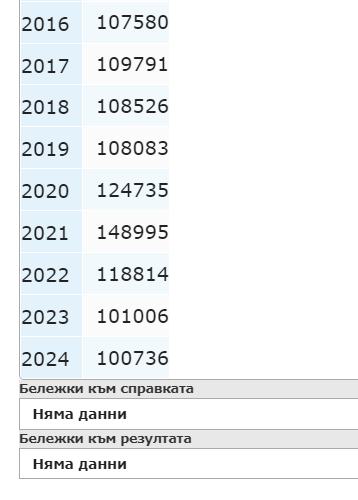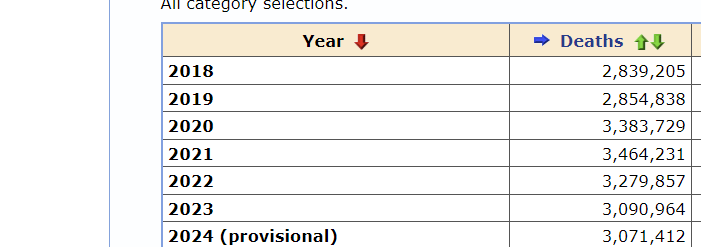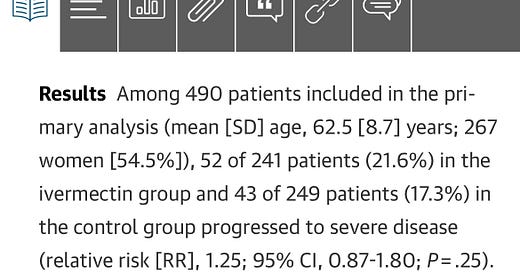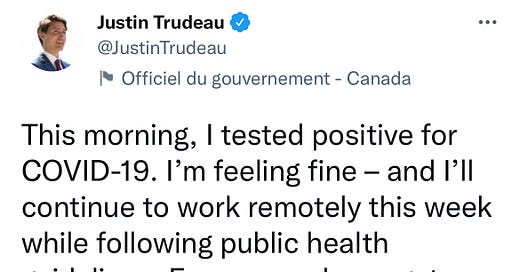
It's time to pay attention to Bulgarian death rates. Yes, I'm serious.
Why? Bulgarian deaths have plunged since Covid ended, thanks to the "pull-forward effect." Elsewhere, they're still high, and no one knows why. Did I mention Bulgaria mostly rejected Covid vaccines?
“The pull-forward effect.”
You might remember hearing that phrase early in Covid. It was a polite way to say that because Sars-Cov-2 mostly killed people who didn’t have long to live, any temporary rise in deaths during the epidemic would likely be followed by a temporary decline in deaths once it ended. Everyone only dies once, after all.
This theory was conventional wisdom in March 2020, when British epidemiologist Neil Ferguson said most people who died from Covid would have died within nine months anyway. (He did so while arguing FOR lockdowns, but that’s another story.)
Except, five years after Covid began, we’re still waiting for the pull-forward effect to kick in. Across the wealthy world, Covid has largely vanished, but deaths remain high.
—
(Sign up for Unreported Truths now, while you’re still alive!)
—
By any standard, Covid was done by 2023. Yet annual deaths in many countries remain notably higher than before 2020, when the epidemic first hit. They are lower than they were during 2021, Covid’s peak year, but that decline now seems to have ended.
The United States had 3.07 million deaths in 2024, down slightly from 3.09 million in 2023, but still above the 2019 level of 2.85 million. Britain and Germany had 1.58 million deaths combined in 2024, compared to 1.47 million in 2019.
Part of this trend comes from societal and demographic changes. Over time, deaths inevitably rise as population grows. Better health and medicine can lengthen life, but the reaper always wins. The long-run death rate remains an even 100 percent.1
—
(Death, taxes, and sequels for successful horror franchises: life’s three guarantees)
—
But at this moment deaths in most countries appear to be at least slightly above the long-term pre-Covid trend.
And that fact makes no sense.
The United States and Europe suffered almost 3 million deaths above the long-term trend line from 2020 to 2022. Most of those people were over 80, very sick, or both. Those deaths should be being “repaid” right now. We should be below trend.
Bulgaria is the proof.
Located in Europe’s southeastern corner, just north of Greece, Bulgaria is among the continent’s poorest and least healthy countries, with lots of smoking and obesity and a brittle medical system. Not surprisingly, Covid hit it hard. In 2020, total deaths in Bulgaria were about 15 percent above the 2019 level, 125,000 compared to 108,000. In 2021 they were 37 percent above.
After generations of repressive Communist rule, Bulgarians also have a strong suspicion of authority and serious vaccine hesitancy. Barely 30 percent of Bulgarians received even the first two-dose regimen of Covid shots, among the lowest levels anywhere outside Africa. Boosters were close to non-existent.
Not surprisingly, legacy media writers and public health bureaucrats complained in 2021 that Bulgaria’s reluctance on Covid vaccines had caused its epidemic to spiral and allowed many preventable deaths.
In a November 2022 paper in the journal Vaccines, Bulgarian researchers explained:
Vaccination in Bulgaria remained very low throughout the examined period… resulting in much higher mortality than in countries with high vaccination coverage. While deeply regrettable as a public health outcome for the country, this fact allows for the observation of the potential full impact of the pandemic…
—
But the researchers were more right than they understood when they wrote Bulgaria’s low vaccination rate would allow for a truer view of Covid’s impact.
Even as their paper came out in late 2022, deaths in Bulgaria were below their pre-Covid baseline.
They’ve remained below it ever since.
See for yourself.
—
(Deaths in Bulgaria by year, courtesy of the Bulgarian National Statistical Institute. In 2024, deaths were well below the pre-Covid trend. This is what was supposed to happen everywhere. Only it hasn’t.):
—
The trend is striking.
Death isn’t exactly on holiday, but it’s working shorter hours, as the premature mortality from Covid evens out. The effect is particularly visible in Bulgaria because the country’s high level of chronic disease left it exposed, and vaccines did not delay or change the natural course of the epidemic.
Compare Bulgaria’s experience to the United States - where 82 percent of people received at least one Covid jab and 36 percent received at least one booster.
—
—
Deaths in the United States peaked in 2021, at about 18 percent above the pre-Covid trend. Obviously, that figure wasn’t as bad as the Bulgarian spike that year.
But by 2022, American deaths were actually higher than Bulgaria’s relative to the pre-Covid trend. And that gap became much worse in 2023 and 2024.2
So why haven’t deaths fallen in the United States? Or Western Europe? What happened to the pull-forward effect?
—
(Still asking the questions they’d rather I didn’t.)
—
The Bulgarian data prove that the answer cannot be “long Covid,” or anything to do with the long-term impact of coronavirus infections. After all, Covid ravaged Bulgaria badly in 2020 and 2021. But once it was gone, it was gone.
Of course, Bulgaria does have one obvious difference with the rest of Europe and the United States since 2020. It’s not Covid. It’s that Bulgaria used far fewer Covid vaccines, and particularly mRNA vaccines.
Bulgaria’s experience since 2021 suggests that - at best - heavy use of mRNA only temporarily slowed Covid deaths in people who would have died within years anyway.
But that’s the best possible outcome for the mRNAs at this point. At this point, it is impossible to tell how much longer Bulgaria will post below-trend deaths — and how much longer the United States and other countries will have higher than normal death rates. Maybe in another year or two everything will be back to normal on both sides.
Maybe. Or maybe not.
There’s only one thing we can know for sure: as long as the ugly reality of above-trend deaths in highly mRNA vaccinated countries lasts, the legacy media and the companies pushing mRNA will ignore it.
For some truly bracing math, take a look at the Social Security death probability charts, which predict to the sixth decimal place the chance you will meet your maker in any given year of life.
To be fully clear, using only the raw numbers makes the United States look slightly worse than it should compared to Bulgaria. Unlike Bulgaria, the United States has a rising population and had a trend towards higher annual deaths even before Covid, so its “normal” annual baseline for 2025 would probably be close to 3 million deaths right now even if Covid hadn’t existed. Still, the United States is above that baseline at this point.



















I did a similar analysis for the US using the Human Mortality Database and arrived at slightly over two million excess deaths in the US, using 2019 as a baseline. They have been declining, but are still in excess and show no sign of mortality pull forward.
I compared this to highly vaccinated Sweden, where the mortality has returned to baseline. This would tend to implicate the response to covid rather than vaccines.
I don’t think we can come up with a satisfactory answer, but the CDC should have enough smart people and resources to understand this. But so far we have not heard a thing from them.
We’ll have to see the results from the continuing clinic trials from the shots. Oh wait, never mind.